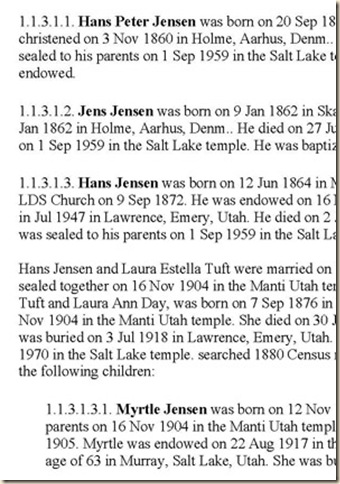As you organize the chapters of your book, it looks nicer to have them each start on the right hand side of the page. In order to do that, they need to have odd page numbers on them. The standard way to number pages is to have the even numbered pages on the left and odd numbered pages on the right. You might need to insert a blank page at the end of a chapter in order to start the next one on the right side. Or an idea that I like better is to have a few pictures or documents that you were going to leave out of the book that you can put on these extra pages.
The title page and table of contents should also be placed on a right hand page.
Chris Stevenson cs@sgenealogy.com

